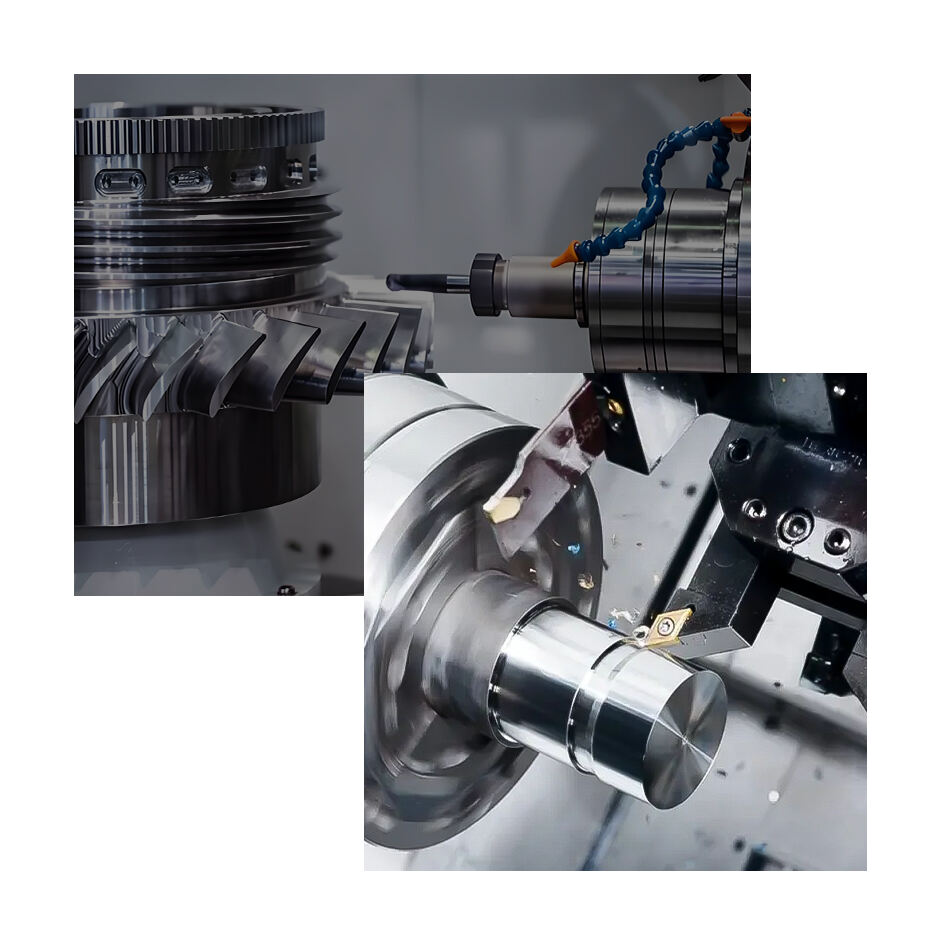Key Considerations for R&D-Focused CNC Manufacturers
Material Expertise in CNC Metal and Brass Machining
When diving into research and development in CNC machining, selecting the proper materials is a fundamental step. This choice profoundly impacts not only the performance but also the efficacy of the developed components. For instance, materials like aluminum, steel, and brass play crucial roles based on their distinctive properties: aluminum offers a good strength-to-weight ratio and machinability; steel promises durability and strength, albeit with a potential increase in machining difficulty; and brass is favored for its machinability and electrical conductivity.
Understanding the properties of each material, such as machinability, strength, and corrosion resistance, is pivotal. These properties influence the machining process and ultimately dictate the turnaround time and costs associated with a project. For example, easy-to-machine materials often expedite the production process and lower costs, whereas certain challenging metals might incur additional expenses due to increased machine wear or longer machining times. The knowledge of these intricacies is integral to successful CNC metal machine milling and projects involving CNC brass components.
Prototyping Capabilities for Complex Geometries
Rapid prototyping is an indispensable component of the R&D process, significantly aiding in reducing development cycles. It allows for multiple iterations and immediate testing of designs, particularly when working with complex geometries. Advanced CNC technology facilitates the creation of intricate designs that might be unattainable through traditional methods, thanks to superior CNC cutting tools that ensure precision and flexibility.
Real-world case studies highlight the efficiencies gained and cost reductions achieved using sophisticated CNC prototyping methods. For example, companies have reported substantial savings by iterating prototypes swiftly and identifying design flaws before moving to full-scale production. This capability not only enhances speed but also ensures that designs are optimally refined before manufacturing, further bolstering prototyping capabilities during R&D phases.
Tolerance Standards for Precision Metal Cutting
In precision industries such as aerospace and medical, maintaining strict tolerance standards is vital for ensuring component functionality and adherence to industry regulations. Tolerance denotes the permissible limit or limits of variation in physical dimensions and is integral to precision metal cutting. For instance, in the aerospace industry, even minute discrepancies in measurements can lead to significant performance issues.
Industry reports consistently demonstrate a positive correlation between maintaining precise tolerance standards and enhanced product performance. By adhering to these standards, manufacturers ensure the reliability and quality of their components, which is crucial for building customer trust and meeting regulatory requirements. Therefore, understanding and implementing these standards is crucial for any R&D-focused CNC manufacturer aiming for precision and excellence.
Scalability from Prototype to Full Production
The journey from prototype to full-scale production hinges on key factors like technology investments and adaptability in the manufacturing process. Achieving scalability demands a flexible setup that can seamlessly transition from low-volume production to high-volume manufacturing, which is essential for responding to market demands and customer expectations.
Implementing advanced CNC metal cutting machines is a strategic move that facilitates scalability. These machines are designed to cater to various production levels, allowing manufacturers to effortlessly adjust operations based on project demands. Statistics reveal that successful scaling often stems from investments in state-of-the-art CNC technologies, enabling manufacturers to grow their capabilities without compromising on quality or efficiency. Thus, scalability remains a cornerstone for manufacturers aiming to evolve from R&D to large-scale production efficiently.
High-Mix, Low-Volume Production Flexibility
High-mix, low-volume production is increasingly significant for R&D-focused CNC manufacturers, allowing them to produce a wide variety of parts in smaller quantities. This flexibility is crucial in a rapidly evolving market where customization and quick response to customer needs are paramount. By adopting this production model, manufacturers can cater to diverse customer demands without overcommitting resources or facing the risk of overstocking. According to manufacturing studies, this production approach is steadily growing as it aligns with consumer trends toward personalized and shorter product life cycles, indicating a shift in CNC machining trends toward more agile and responsive production methods.
Multi-Axis Machining with Advanced Cutting Tools
Multi-axis machining is a significant advancement in CNC technology, enabling manufacturers to achieve more complex designs with greater precision. This capability allows the movement of tools along multiple axes simultaneously, resulting in intricate geometries that single-axis machines cannot accomplish. Advanced cutting tools play a pivotal role in this process, providing the necessary precision and efficiency to create detailed and refined components. By utilizing multi-axis machines, R&D initiatives benefit from significant efficiency gains, as these machines reduce setup time and enhance the quality of intricate designs, driving innovation in CNC machining.
AI-Driven Process Optimization
AI-powered process optimization is transforming CNC machining by enhancing operational efficiency. Artificial intelligence integrates seamlessly into CNC processes, enabling manufacturers to predict potential failures, optimize machining speeds, and improve overall product quality. This integration not only minimizes downtime but also reduces resource wastage and increases precision. Statistics suggest that manufacturers utilizing AI technologies witness significant improvements in productivity rates, underscoring AI's transformative impact on CNC machining. By adopting AI-driven processes, manufacturers can stay ahead in a rapidly changing industry landscape, ensuring superior quality and enhanced production efficiency.
Evaluating Chinese CNC Cutting Wholesalers
Quality Certifications for Metal Cutting Machines
Certifications, such as ISO 9001, play a crucial role in establishing trust and enhancing the credibility of CNC cutting machines from Chinese wholesalers. These certifications are benchmarks for quality management systems, ensuring that manufacturers adhere to robust standards of production and compliance. By working with certified manufacturers, companies can expect consistent product quality and conformity to international standards, fostering reliability and confidence in CNC metal machine milling processes. According to case studies, manufacturers holding quality certifications have demonstrated improved production outcomes, underscoring the pivotal role that certifications play in the competitive CNC industry. For buyers, this means a guarantee of quality assurance when choosing a reputable supplier.

Supply Chain Transparency in Global Partnerships
Supply chain transparency is integral to fostering strong and reliable global partnerships with CNC cutting wholesalers in China. Transparency in sourcing and manufacturing enables companies to build trust with partners, ensuring ethical practices and consistency in product delivery. However, achieving full visibility throughout the supply chain can be challenging due to complex international logistics and diverse regulatory environments. Effective strategies to overcome these challenges include utilizing advanced tracking systems and fostering open communication channels. Statistical evidence suggests that companies with transparent supply chains experience enhanced performance metrics, including improved delivery times and reduced operational risks, solidifying their global partnerships effectively. This transparency is key to sustainable growth in the CNC brass industry.
IP Protection Strategies for R&D Projects
IP protection is vital for safeguarding innovations in CNC R&D projects. Best practices for ensuring IP security include developing comprehensive agreements and legal frameworks tailored to specific R&D needs. These practices are essential for CNC cutting tools developers aiming to maintain their competitive edge in the market.
Case Studies in Successful R&D Collaborations
Aerospace Component Development
One exemplary case study in aerospace component development highlights significant technical challenges and solutions. These partnerships fostered innovations in aerospace component design by integrating advanced CNC technology, offering improved precision and streamlined setup times. This success underscores the pivotal role of CNC collaborations in transforming aerospace development, helping us push the boundaries of what's possible in aerospace engineering.
Medical Device Prototyping Collaboration
One exemplary case in medical devices highlights advancements driven by R&D collaborations, which accelerated prototyping through CNC brass machining. Such collaborations showcase the benefits derived from shared expertise, paving the way for improved diagnostic devices and better technological advancement in healthcare.
Automotive Innovation Projects
Collaborations in automotive innovation projects, integrating CNC metal cutting tools and advanced CNC technology, have enabled rapid redesign and fabrication of intricate vehicle components. This collaboration has resulted in a 15% faster market entry, demonstrating the powerful effect of shared R&D initiatives and rapid adaptation to consumer demands and technological advancements.
Future-Proofing Manufacturing Partnerships
Adopting New Technologies
Adopting smart factory technologies is crucial for future-proofing manufacturing partnerships in CNC manufacturing. By integrating advanced processes such as automation and real-time data analytics, companies can enhance production efficiency by up to 20%, resulting in better resource management and reduced operational costs.
Sustainable Machining Practices
Sustainable machining practices are essential in CNC operations. Embracing strategies like recycling metal chips and using biodegradable lubricants significantly lowers the ecological footprint. According to industry research, these sustainable practices can cut operational costs by 12%, offering a competitive advantage for CNC businesses by appealing to environmentally conscious consumers and regulatory bodies.
FAQ Section
What are the best materials for CNC machining?
Aluminum, steel, and brass are among the popular choices due to their machinability, strength, and electrical conductivity.
How does rapid prototyping benefit R&D in CNC machining?
It reduces development cycles, allows for multiple design iterations, and facilitates immediate testing.
Why is tolerance important in precision metal cutting?
Tolerance ensures component functionality, reliability, and adherence to regulatory standards essential in industries like aerospace and medical engineering.
How can manufacturers achieve scalability from prototypes to full production?
By investing in advanced CNC technologies and maintaining a flexible manufacturing process.
What role does AI play in CNC machining?
AI enhances operational efficiency by predicting potential failures, optimizing machining speeds, and improving product quality.

